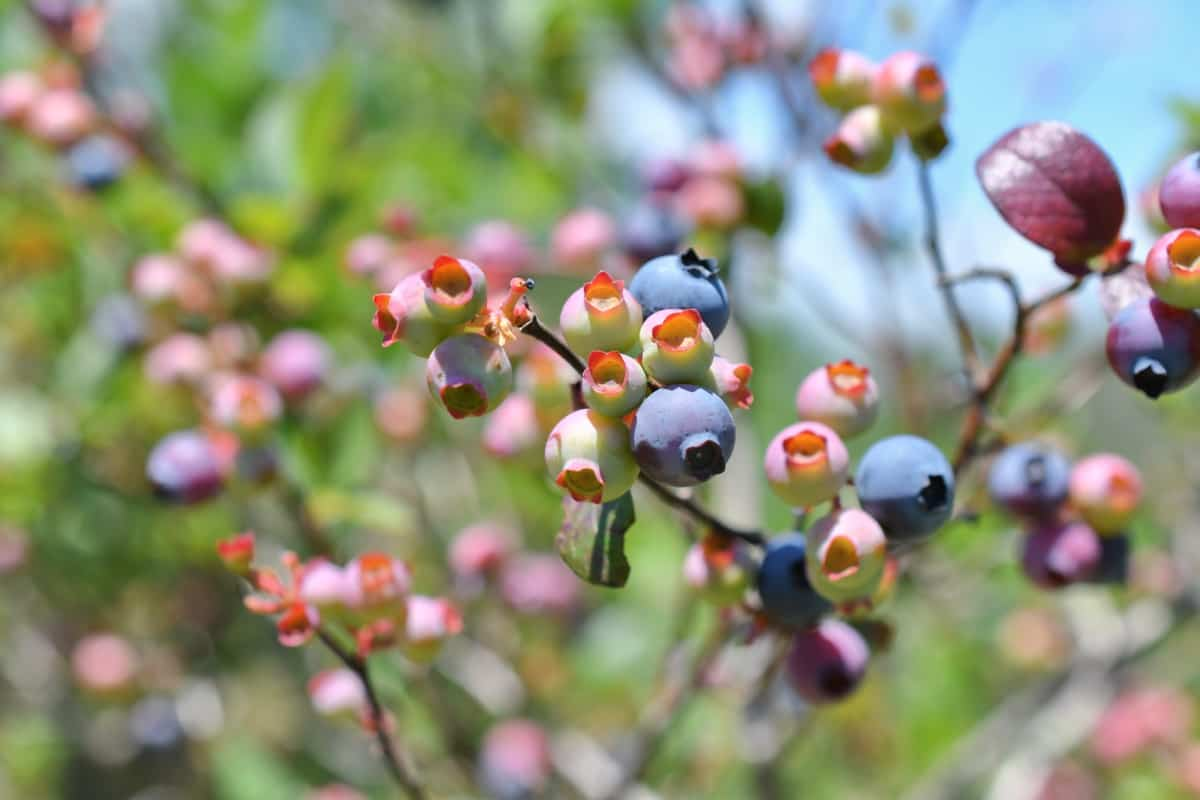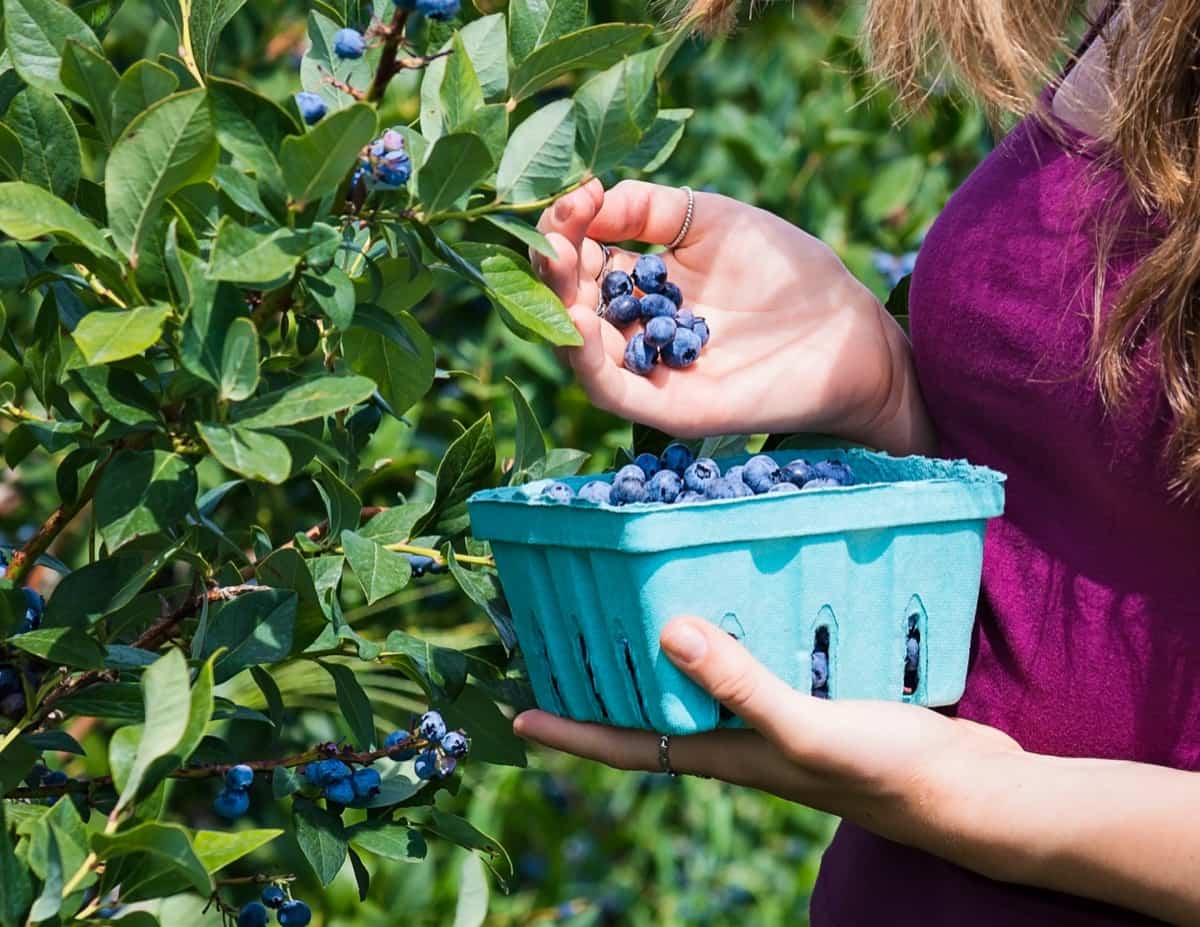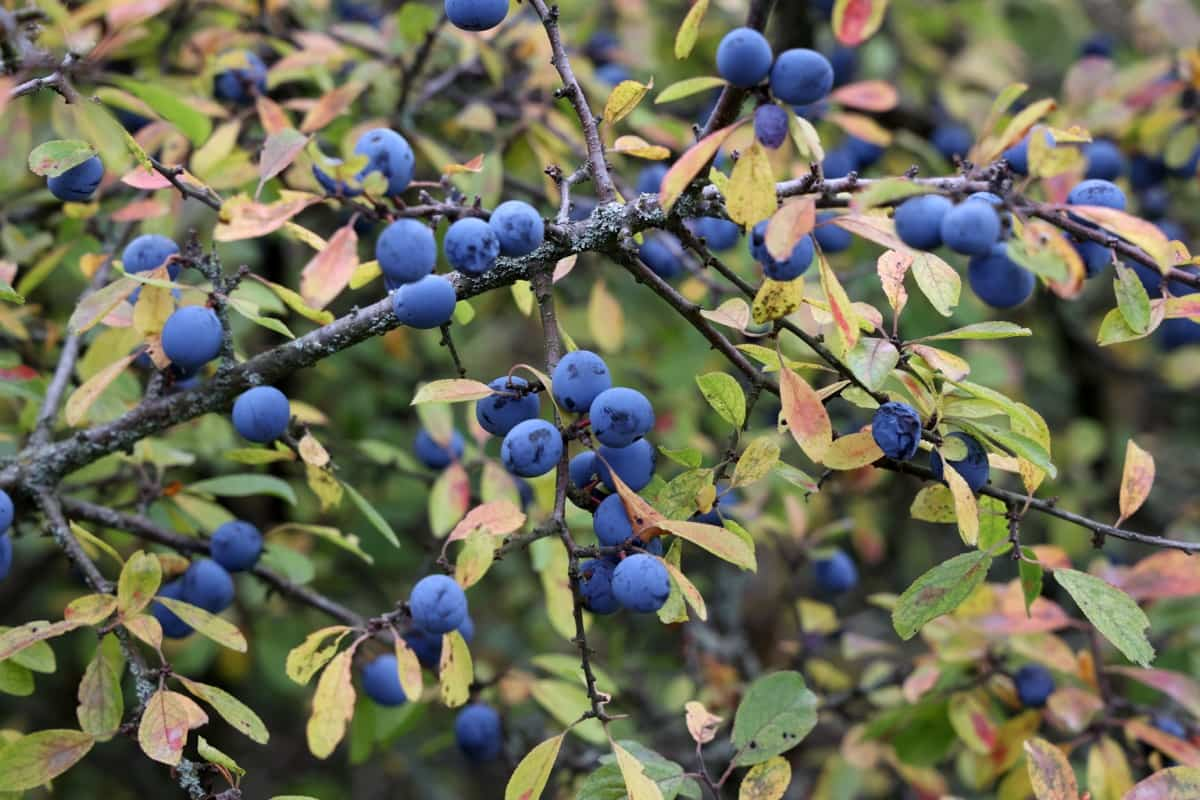Pruning is a crucial practice for maintaining the health and productivity of Blueberry bushes. Gardeners can encourage optimal growth and maximize fruit yield by selectively removing certain branches. Additionally, pruning allows for better airflow throughout the bush, reducing the risk of disease and pest infestations. Furthermore, proper pruning techniques help rejuvenate older bushes that may have become overgrown or neglected.

Pruning Techniques for Blueberry Bushes
Step-by-Step Guide to Pruning Blueberry Bushes for Maximum Yield
Pruning Blueberry bushes is essential for maximizing yield and maintaining the health of your plants. Remove dead or damaged branches. These branches hinder growth and provide a breeding ground for pests and diseases. Use sterilized pruning shears to make clean cuts at the base of these branches. Next, thin out overcrowded areas within the bush.
This allows better airflow and sunlight penetration, which is crucial for optimal fruit production. Remove weaker or smaller branches to create space for stronger ones to thrive. When shaping Blueberry bush, focus on maintaining an open center structure. This helps in promoting adequate air circulation and light distribution throughout the plant. Trim back any crossing or rubbing branches that may impede proper growth.
Another important step is selectively pruning older wood every few years to encourage new growth from younger stems. This process stimulates continued productivity in your Blueberry bush, preventing it from becoming too dense or leggy. Remember always to use sharp tools when pruning and sanitize them between cuts with bleach and water. This prevents the spread of disease-causing pathogens among plants.
Pruning Strategies to Promote Health and Vigor in Blueberry Bushes
Pruning is a vital practice for promoting the health and vigor of Blueberry bushes. By implementing proper pruning strategies, you can ensure that your Blueberry plants thrive and produce abundant, delicious fruit. One important technique for promoting plant health is thinning out crowded branches. When thinning, focus on removing weak or crossing branches to create an open structure.
In case you missed it: Essential Equipment and Tools for Blueberry Farming

Another strategy is selective pruning, which involves removing deadwood and diseased branches. Regular inspection is key to identifying these problem areas. Training your Blueberry bushes through pruning also affects their long-term health. By shaping the bush during its early stages, you can establish a strong framework that supports optimal growth and fruit production later.
Timing and Frequency of Pruning for Optimal Blueberry Bush Growth
Timing and frequency of pruning play a crucial role in ensuring optimal growth for Blueberry bushes. To maximize yield and promote overall health, it is important to understand when and how often to prune these plants. Generally, the best time to prune Blueberry bushes is late winter or early spring. However, if you live in an area with harsh winters, waiting until after the last frost has passed is advisable.
As for frequency, annual pruning is recommended for Blueberry bushes. This helps maintain their shape, remove dead or diseased wood, and encourage new growth. It’s important not to over-prune, though; excessive cutting can reduce fruit production. Remember that young Blueberry plants need extra attention during their first few years as they establish their root systems. During this period, light pruning can be done annually to promote proper branching and structure.
Selective Pruning: Removing Deadwood and Diseased Branches from Blueberry Bushes
One crucial aspect of Blueberry bush maintenance is selective pruning. This technique involves identifying and removing deadwood and diseased branches, hindering your plants’ overall health and productivity. Deadwood refers to branches that are no longer alive or producing foliage. These branches detract from the appearance of your Blueberry bushes and serve as potential breeding grounds for pests and diseases.
By selectively pruning these deadwood branches, you can improve the aesthetic appeal of your plants while reducing the risk of pest infestation. On the other hand, Diseased branches threaten nearby vegetation and your Blueberry bushes’ overall vigor. Pruning out these infected sections helps contain disease spread while promoting healthier growth in unaffected areas.
To effectively perform selective pruning, start by inspecting each branch carefully. Look for signs such as discoloration, lesions, or abnormal growth patterns that indicate disease or death. Using clean pruners or shears, make precise cuts just above healthy buds or lateral shoots to encourage new growth.
Shaping and Training Blueberry Bushes for Improved Structure and Airflow
Shaping and training Blueberry bushes is an essential part of proper pruning techniques. By carefully shaping the plants, you can improve their overall structure and promote better airflow throughout the bush. This enhances the aesthetic appeal of your Blueberry patch and plays a crucial role in maximizing yield and health. First, remove crossing or crowded branches that may hinder air circulation. These tangled branches can create a breeding ground for pests and diseases, so it’s important to prune them out.
In case you missed it: Best Practices for Planting Blueberry Bushes: Tips and Techniques

Additionally, by thinning out dense areas within the bush, you allow sunlight to penetrate deeper into the plant canopy, promoting even fruit ripening. Aim for an open-centered form rather than a dense shrub-like shape when shaping your Blueberry bushes. This opens space between branches and encourages airflow from all directions. Proper airflow helps prevent moisture buildup within the foliage, reducing the risk of fungal infections like powdery mildew.
Pruning Techniques to Encourage Fruit Production in Blueberry Bushes
When it comes to Blueberry bushes, one of the key goals is maximizing fruit production. Thinning out crowded branches is essential. Removing excess branches and creating space within the bush allows adequate airflow and sunlight penetration – vital factors for fruit development. Next up, focus on rejuvenation pruning.
This technique involves selectively cutting back older wood to stimulate new growth. Fresh shoots are more vigorous and produce more abundant fruits than older ones. Don’t be afraid to give your Blueberry bushes a fresh start by removing those aging stems. Selective heading cuts can also promote increased fruit production. Heading refers to cutting back the tips of selected branches without completely removing them.
This method encourages lateral bud break along the remaining branch length, resulting in multiple flowering points and, ultimately, more berries. Prune during late winter or early spring when Blueberries are still dormant but not frost-prone anymore. This allows ample time for new growth before the next growing season begins.
Rejuvenation Pruning: Restoring Overgrown or Neglected Blueberry Bushes
Rejuvenation pruning can help restore its health and productivity. This technique involves cutting back the bush to stimulate new growth and rejuvenate the plant. To start the process, begin by removing any deadwood or diseased branches. These branches are not only unsightly but can also hinder the overall health of your Blueberry bush.
Removing them creates space for new growth and improves air circulation within the canopy. Next, look at the structure of your bush. If it becomes too dense or tangled, thinning out some of the older stems will allow plenty of sunlight to reach the center of the plant. This promotes better fruiting throughout the entire bush.
When pruning an overgrown Blueberry bush, be prepared for drastic cuts. Don’t be afraid to remove larger sections if necessary – this stimulates new growth and encourages a healthier plant overall. After completing rejuvenation pruning, remember to provide ongoing care for your Blueberry bushes. Regular watering, mulching, and fertilizing will support their recovery and promote optimal growth in future seasons.
In case you missed it: 10 Common Mistakes to Avoid in Blueberry Farming: A Comprehensive Guide for Farmers

Conclusion
Pruning Blueberry bushes is crucial in maximizing their yield and maintaining their health. Following the proper techniques and timing can enhance new growth, improve air circulation, and prevent disease. Remember to use the right tools for the job and avoid mistakes such as over-pruning or removing dead wood. So, grab those pruning shears and transform your Blueberry bushes into thriving plants that will reward you with an abundance of juicy berries.
- Feed Your Flock for Less: Top 10 Tips to Save on Chicken Feed
- Ultimate Guide to Ossabaw Island Hog: Breeding, Raising, Diet, and Care
- Hatching Answers: The Top 10 Reasons Your Chickens Aren’t Laying Eggs
- Eggs and Economics: Breaking Down the Cost of Raising Backyard Chickens
- Defend Your Greens: Proven Methods to Keep Iguanas Out of Your Garden
- Ultimate Guide to Cinnamon Queen Chicken: A Comprehensive Guide for Beginners
- Ultimate Guide to California Tan Chicken: Breeding, Raising, Diet, Egg-Production and Care
- Ultimate Guide to Marsh Daisy Chicken: Breeding, Raising, Diet, and Care
- 10 Types of Chicken Farming Businesses You Can Start for Profits